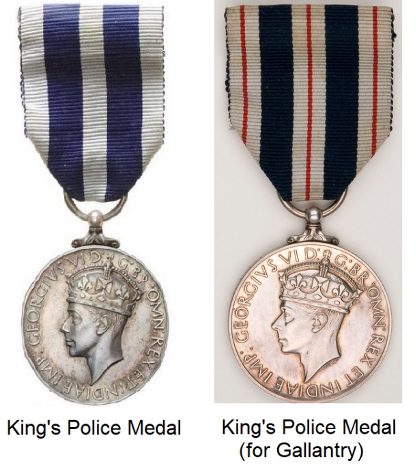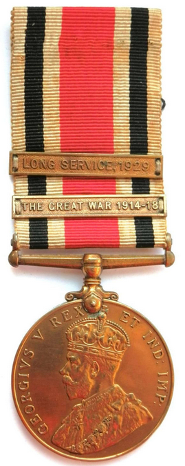Medals of the Police Service
- Andy Robson

- Jul 11, 2022
- 3 min read
Police Officers in the UK, as they belong to a civilian body, are eligible to receive those bravery and meritorious service medals which are open to the general public, including the George Cross (GC) – which replaced the earlier Empire Gallantry Medal (EGM), the George Medal (GM), the British Empire Medal (BEM) and the Queen’s Gallantry Medal (QGM).
In addition, Police Officers are eligible for Jubilee and Coronation Medals which are issued during the period of their service.
However, there are a number of medals which were introduced specifically for the Police Service.
The King’s / Queen’s Police Medal (KPM / QPM)
This was instituted in 1909 to recognise acts of bravery by a serving Police Officer; both in the UK and those Commonwealth countries which did not have their own honours system.

In 1933, two separate versions of the Medal were introduced to recognise both distinguished service and acts of bravery. The first, bearing the inscription ‘For Distinguished Service’, retained the standard ribbon of blue/white vertical stripes. The second, bearing the inscription ‘For Gallantry’, had thin red vertical lines added to the white stripes.
It was extended to the Fire Service in 1940, becoming the King's Police and Fire Services Medal (KPFSM).
Following the coronation of Queen Elizabeth II in 1953, the award was renamed and divided into the Queen's Police Medal (QPM) and the Queen's Fire Service Medal (QFSM). The QPM retained the original design of the King’s Police Medal, while a new design was introduced for the QFSM.
Between 1909 and 1979, the various incarnations of the Medal were awarded on 4,070 occasions for both bravery and distinguished service. In addition, there were 54 ‘bars’ awarded, indicating the award of a second Medal, and one second ‘bar’, indicating the award of 3 Medals to an individual.
Police Long Service and Good Conduct Medal (PLSGCM)

This was instituted in 1951 to recognise 22 years of Long and Meritorious Service in one the country’s Police Forces. Recommendations for awards were made by the Chief Constable of the respective Force to the Home Secretary, confirming that the Officer proposed had met the required term of service and that they had done so with efficient service throughout and that they were possessed of a very good character.
The award could not be backdated for Long Service which ended prior to 1951.
In 2010 the term of service was reduced to 20-years to bring the Medal in-line with similar awards for the Fire and Ambulance Services.
Special Constabulary Long Service and Good Conduct Medal (SCLSGCM)

This was established in 1919 – as the Special Constabulary Medal – to recognise service as a Special during the First World War. Recipients were required to have served for at least 3-years and to have performed at least 150 police duties.
Once it was recognised that the Specials were to continue to serve after the War, the award was renamed the Special Constabulary Long Service Medal in 1920 and the award criteria was fixed at 9 years of meritorious service. To incorporate the criteria for the original award, service during World War One was to count as triple time. In addition, men who had received the Medal under the original (1919) criteria were issued with a Clasp inscribed ‘The Great War 1914-18’ to distinguish their Medals from subsequent awards.
A Clasp inscribed ‘Long Service’ (followed by the year that the Clasp was awarded) was added in 1929 to recognise a further 10 years of meritorious service.
Service during the Second World War was granted the same triple-time qualification as had that during the First World War.




Comments